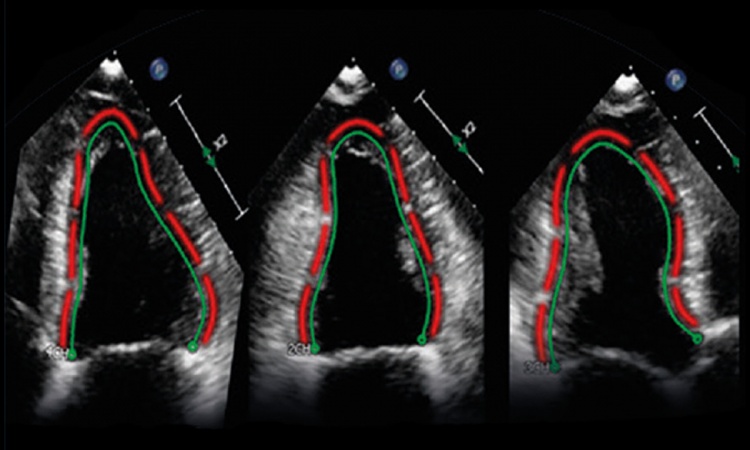Planning the Hospital of the Future
The first decade of the 21st century has ended and the time has come to make up some minds about what hospitals should look like in the near future to fulfill the requirements of modern medicine and demographic changes.

That is what Stephen Wright, Executive Director of the European Centre for Health Assets and Architecture, together with other experts did for their books “Capital Investment for Health” and “Investing in Hospitals of the future”*. With Meike Lerner from EUROPEAN HOSPITAL, he talked about the main theses and theories.
A hospital is a modern icon, and changing icons is a difficult job, said Stephen Wright. The context in which the hospital works is also changing rapidly because of the increase in aged populations, the change in diseases
themselves, and the impact of new treatment options and IT technology. Given the many changes, if today’s
ideal hospital could be defined, he said, it would not be an ideal hospital tomorrow: ‘It’s not a surprising conclusion that you need flexibility in the building design and its physical structure needs to be flexible to some degree, so that, even if you don’t change the outside walls, you can move things around and reconfigure inside. So the pattern of the building needs to be flexible and appropriate for the services you think will be delivered over very long periods of time, between 5 to 30 years.
Hospital financing also should be quite flexible, so that it can react to circumstances -- what will be done in the hospital, over long periods of time. So, the financial services, physical assets and healthcare services should all be simultaneously flexible. That’s one of the big single conclusions of the two studies.’
Another aspect may sound ‘a little abstract’, he said. People think of hospital size in terms of beds, which, he said, harks back to what hospitals were doing up to 100 years ago, when a hospital largely had a ‘watch and wait’, ‘storage function’. Today we ‘process patients’ and therefore need to plan the way in which a patient moves through a facility. ‘He’s unlikely to pass through in a straight line. He will come in at some point but, if you examine his route afterwards, he’ll go through this rather complex network and then possibly backtrack to some degree, for example to have a different test done. All this is particularly worsened when you have medical co-morbidities. The average person is now of a certain age and more will suffer from several illnesses simultaneously.A hospital is not just a warehouse with a number of beds.’ Access to hospital must be maintained to the extent that they are needed, but not necessarily by proliferating the number of hospitals, he said. ‘In the future we might have more, smaller hospitals, rather than the extremely large temples of learning we have now. Perhaps it would be nice and reasonable to have more intermediate facilities.’
In the book an example of the restructuring of the entire healthcare and social care services in Northern Ireland is discussed. ‘They’ve designed a complete network running from general practitioner surgeries and health centres in local areas, up to the one mega hospital that will handle the really critical issues. So, rather than having a hospital in every town and village, which may appear to solve the access problem, it might be better to ensure, for example, that ambulances are extremely well equipped to give immediate necessary care to keep a patient alive until he can reach some facility that can do more.
It’s often the first 10 minutes that arecritical and putting in another hospital would not solve that 10 minute problem. So, I don’t think ideas we have presented are bad news for hospitals. This is not a statement that the hospital is dead, just that we need something else -- but not one that leaves people in remote areas without access.
Financing
The new financing models highlighted are EU structural fund grants and public/private partnerships. Because the central and south-eastern European countries, which have more recently joined the EU, often have invested little in hospital structures, funding will be initially for capital assets. ‘The former Soviet Bloc countries have highly hospital-
centric systems, which we are certainly moving away from in the West. So it’s possible that those countries can make a single leap to a different generation of hospital care, rather than passing through some of the systems we have, and EU structural funds could be quite important in ensuring this will happen.’
Next comes the public/private partnership (PPP) concept, which can be a variety of things, he said: just the buildings, which may or may not include the equipment but nothing else, or also including a hospital’s clinical services delivered by the same or a separate company. ‘Looking forward, I think there will be a good deal of flexibility in PPP models. It’s likely to lead to quite a lot of thinking about the way that PPPs may substitute private capital for public capital, which will be increasingly scarce as governments seek to repair their balance sheets
in the aftermath of the financial and economic crisis.
Opinions and Voices
‘In Europe it is impossible to talk about averages’ Pascal Garel, Chief Executive, European Hospital and Healthcare Federation (HOPE) commented: ‘Of course these two books are important. They may give sometimes the impression that this is the first time somebody cares and discusses this topic. All ideas are not totally new and only some bring us knowledge that was not present before.
We’ve not been waiting for this book to look into the way in which we do capital investment; we’ve been working on that for years at national and regional level. My personal experience of 20 years in hospital management and buildings and so on, is that although there might still be things that are not optimal, we have learned a lot. Those very complex mechanisms cannot be drawn in black and white – i.e. before all was bad and now all might be good if you follow this advice. We’re already doing it in many places.
The book self-selected eleven hospitals and systems out of 15,000 across Europe, but talking about the hospital landscape in all of Europe is always difficult because of the diversity of healthcare systems. ‘We have 27 countries with such different historical backgrounds – in the east or west, in Germany with 80 million inhabitants or in Malta with half a million – hospital landscape can hardly be compared. It is very difficult to have an honest picture. The worst thing you can do in Europe is talk about averages. The fact that Romania spends 5% of its GDP in health and France, with a higher GDP, spends 11% makes a huge difference.
Moreover, healthcare is very much decentralised in Europe, which makes it even more complex. If you talk about Spain, you cannot talk about it as a whole; you’re talking about Catalonia or the Basque region. It’s the same in Germany and in Italy, where the regional factor plays a big role in hospitals, particularly in investment. In countries
where investment and finance are at the regional level well depends whether or not they decide to put it into schools, highways or hospitals. So there are plenty of differences in that regard. In addition, during the last ten years there has been considerable investment in hospitals of course in France, Germany and the UK, but also in Spain and Italy. The Baltic States and others also received a lot of EU structural funds resources for hospital investment. We have not yet the exact information if it works, what has been adopted or if it has involved patients and so on, but from the one I know best – France -- of course it has been a growing trend in investments to follow the route mentioned in the book.
A challenge for hospital managers
Jeni Bremner, Director of the European Health Management Association (EHMA), commented: ‘The requirements for managers are quite significant when they are involved in building and restructur ing a hospital or hospital chain. One of the key roles is the active engagement of commissions and hospital staff -- the people who use the building -- and that can be quite difficult to do because everybody is really busy and if, in the first steps, you only look at a model, it is quite hard to think through how that model will work in practice. You must consider different patient flows and the different uses. For example, if an architect is thinking about an out-patient facility, he may look at the number of patients who will come through. So, in terms of waiting rooms, you have to calculate how many seats are needed. In a paediatric department, for example, each patient will be accompanied by at least one otherperson. All these things must be taken into account. That is where the active involvement of commissions can be very important, because they can suggest how many people can be expected.
‘So the manager’s task is to bring the different commissions and people together and shape the design and also try to translate that design. That’s quite a risky task because the decisions they must make are relevant for decades and influence a whole city or community. So the decision for an ambitious project, like those described in the book ‘Capital investment for Health’, is one that should not be under-rated. Of course, case studies are really helpful on how to manage such a huge project, but every hospital, city and country is very different. A hospital manager will get helpful tips and inspiration to translate into their own context to build his or her hospital.’
* ‘Capital Investment for Health
– Case studies from Europe’, by Bernd Rechel, Jonathan Erskine, Barrie Dowdeswell, Stephen Wright, Martin
McKee. Observatory Studies Series No. 18; European Health Property Network; European Observatory on Health Systems and Policies. ‘Investing in Hospitals of the Future’, By Bernd Rechel, Stephen Wright, Nigel
Edwards, Barrie Dowdeswell, Martin McKee, Observatory Studies Series No. 16; European Health Property Network; European Observatory on Health Systems and Policies
26.01.2010





